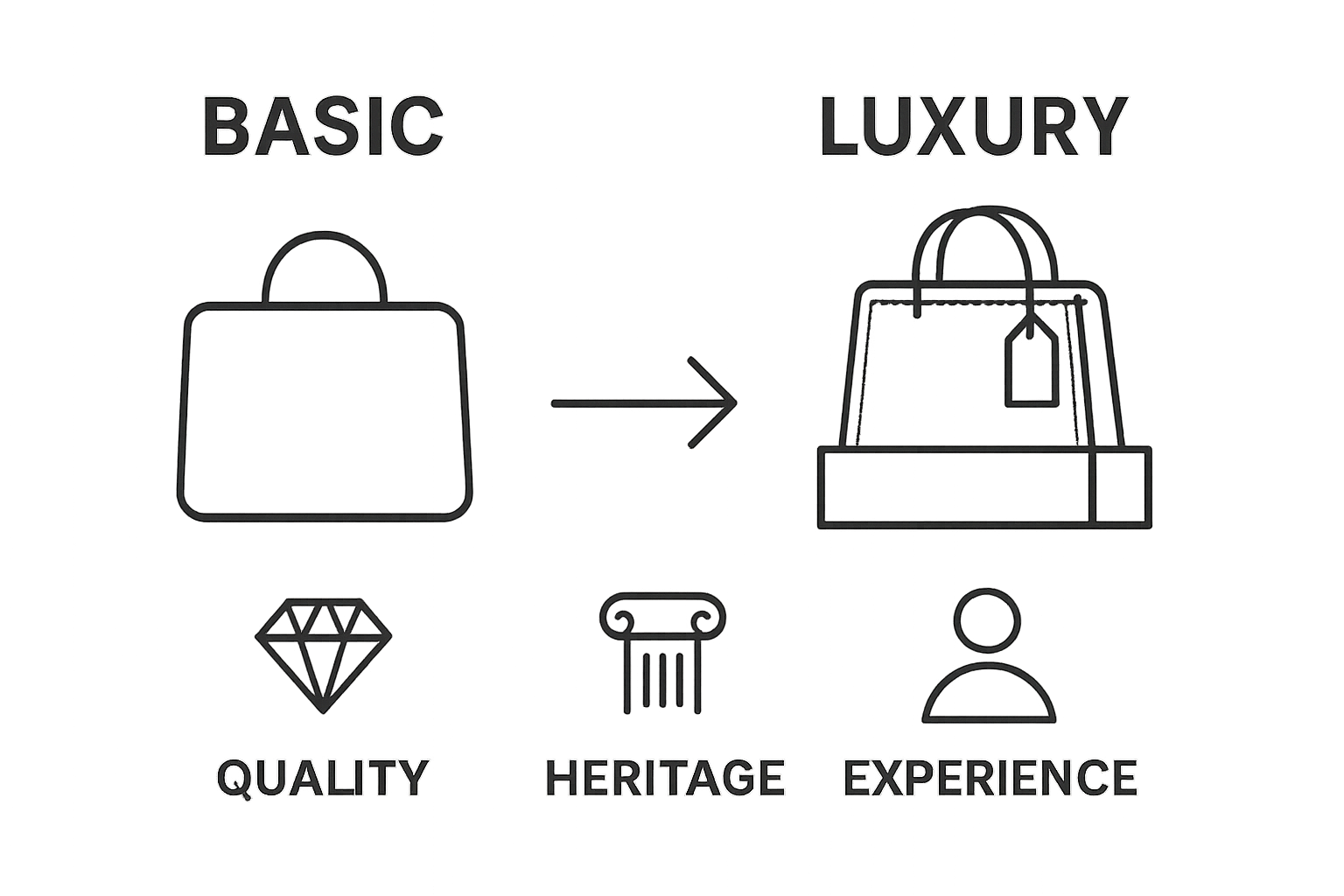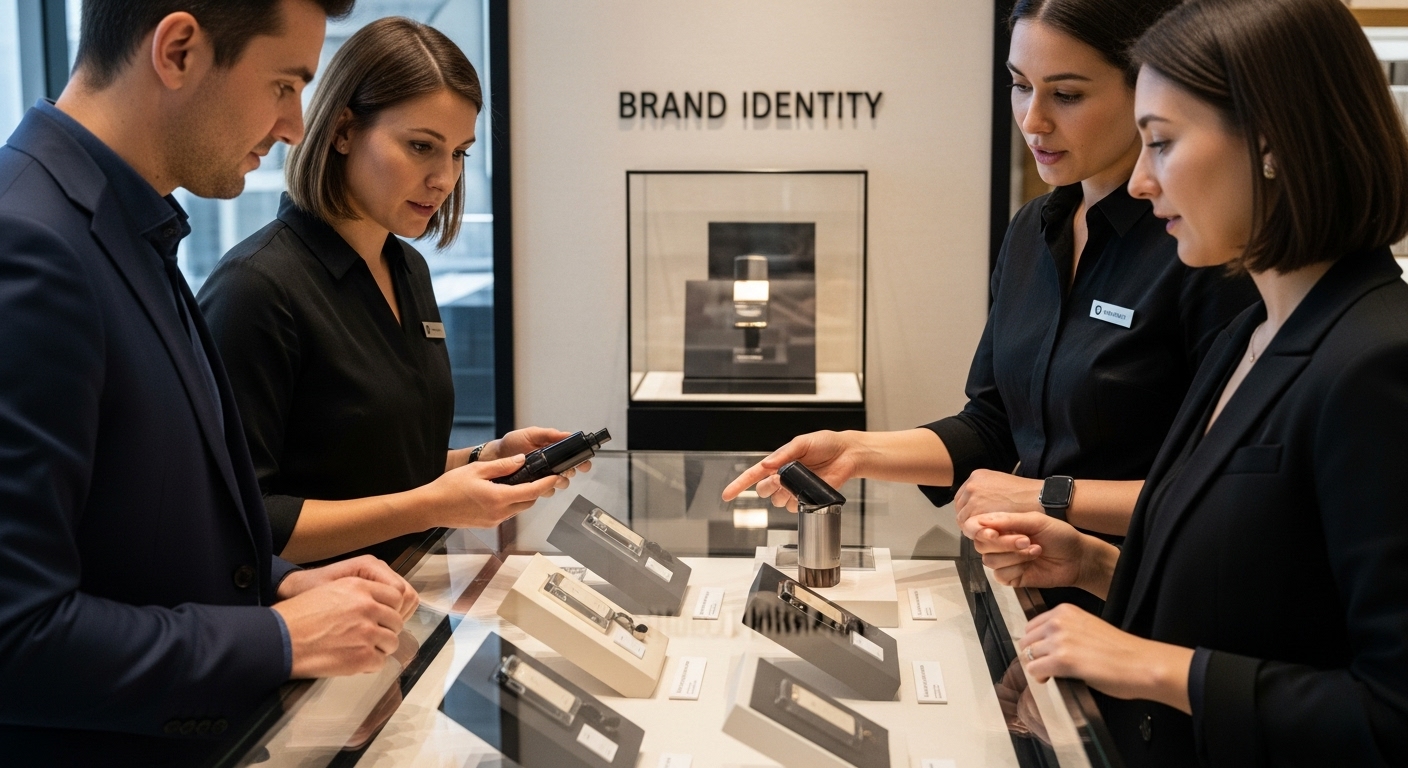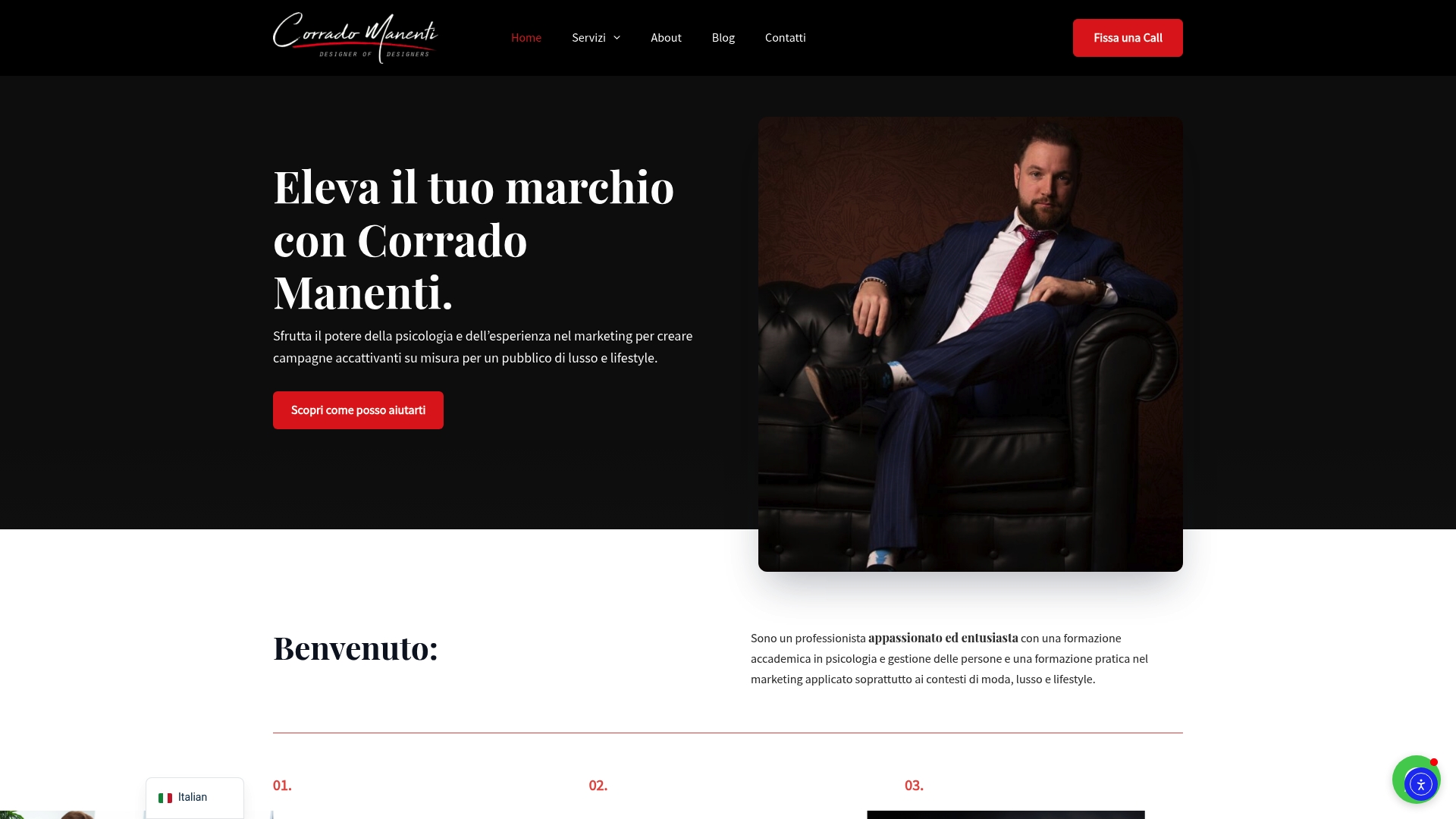Luxury branding is not just about selling expensive items. It is a world where every choice tells a story, from the thread in the fabric to the feel of a box in your hand. Most people assume high prices are what make these brands special. But in reality, luxury brands that excel in subtle details can see customer retention rates far higher than competitors focused only on product features. The true power sits in those tiny, expertly crafted moments that shape how people feel, remember, and stay loyal.
Table of Contents
- What Is Luxury Branding And Its Foundations?
- The Significance Of Detail In Creating Brand Identity
- How Details Influence Consumer Perception And Loyalty
- Practical Applications Of Detail In Luxury Experiences
- Real-World Examples Of Detail In Luxury Branding
Quick Summary
| Takeaway | Explanation |
|---|---|
| Luxury branding creates emotional connections. | It’s not just about selling products; it’s about selling a lifestyle and aspiration. |
| Detail is crucial for brand identity. | Every small element communicates brand values and influences consumer perception deeply. |
| Exceptional experiences drive customer loyalty. | Loyalty stems from cumulative positive micro-experiences rather than single transactions. |
| Storytelling enhances brand appeal. | Integrating heritage and cultural narratives can deepen emotional resonance with consumers. |
| Personalization is key in luxury marketing. | Using technology for tailored experiences can transform customer interactions into memorable narratives. |
What is Luxury Branding and Its Foundations?
Luxury branding represents a sophisticated strategic approach that transcends traditional marketing by creating extraordinary emotional connections between premium brands and discerning consumers. This complex discipline combines psychological understanding, meticulous design, and strategic positioning to craft experiences that go beyond mere product transactions.
The Conceptual Framework of Luxury Branding
At its core, luxury branding is about constructing a narrative of exceptional value that distinguishes a brand from standard market offerings. Unlike conventional marketing, luxury branding focuses on selling an aspiration, a lifestyle, and an exclusive identity rather than just functional product attributes. Brands in this domain meticulously design every touchpoint to communicate prestige, craftsmanship, and unparalleled quality.
Key foundational elements of luxury branding include:
- Heritage and Storytelling: Connecting products to rich historical narratives
- Exceptional Craftsmanship: Demonstrating uncompromising quality and attention to detail
- Emotional Resonance: Creating deep psychological connections with consumers
Strategic Positioning and Consumer Psychology
Luxury brands understand that their primary commodity is not just the product but the experience and perceived exclusivity. According to Luxury Education Foundation, successful luxury branding requires a nuanced understanding of consumer psychology. This involves carefully curating brand perceptions, managing scarcity, and creating a sense of privilege for potential customers.
The strategic approach involves read more about luxury branding best practices that go beyond traditional marketing techniques. These brands invest extensively in understanding their target audience’s aspirational desires, cultural contexts, and emotional triggers, transforming products into symbols of personal achievement and refined taste.
By integrating storytelling, exceptional design, and a deep understanding of consumer motivations, luxury branding creates an immersive world that extends far beyond the physical product, offering consumers a sense of belonging to an exclusive, highly curated universe of excellence.
Below is a table summarizing the foundational elements of luxury branding and their core purpose, helping clarify how each aspect contributes to overall brand perception.
| Foundational Element | Purpose |
|---|---|
| Heritage and Storytelling | Connects products to rich historical narratives |
| Exceptional Craftsmanship | Demonstrates uncompromising quality and attention to detail |
| Emotional Resonance | Creates deep psychological connections with consumers |
| Strategic Positioning | Curates brand perceptions and manages exclusivity |
| Meticulous Design | Ensures every touchpoint communicates prestige and quality |
The Significance of Detail in Creating Brand Identity
In luxury branding, detail represents the intricate language of excellence that transforms ordinary products into extraordinary experiences. Every microscopic element becomes a deliberate communication strategy, telling a sophisticated narrative about brand values, heritage, and commitment to unparalleled quality.

Precision as a Strategic Design Philosophy
Detail in luxury branding goes far beyond aesthetic considerations. It represents a comprehensive philosophical approach to brand communication where every element is meticulously curated to evoke specific emotional responses. From the texture of packaging materials to the subtle nuances in typography, each design choice becomes a strategic decision that communicates brand essence.
Key dimensions of detail in brand identity include:
- Visual Consistency: Maintaining uniform aesthetic standards across all brand touchpoints
- Material Selection: Choosing materials that reflect brand quality and craftsmanship
- Sensory Experience: Designing interactions that engage multiple perceptual dimensions
Psychological Dimensions of Micro-Experiences
Luxury brands understand that consumers do not just purchase products but invest in sensory and emotional experiences. According to research from Brand Strategy Insights, micro-interactions and minute design details significantly influence consumer perception and brand loyalty. These subtle elements create a subliminal narrative of sophistication and exclusivity.
Explore consumer psychology strategies that transform seemingly insignificant details into powerful emotional triggers. The precision of a logo’s curve, the weight of a product’s packaging, or the specific shade of a color can communicate volumes about brand identity, transforming material objects into complex psychological symbols of aspiration and refined taste.

In essence, detail in luxury branding is not just an aesthetic choice but a profound communication strategy that bridges tangible product experiences with intangible emotional landscapes, creating a comprehensive brand universe that resonates deeply with discerning consumers.
How Details Influence Consumer Perception and Loyalty
Luxury brands recognize that consumer perception is a complex psychological landscape where minute details serve as powerful communication instruments. These intricate elements create profound emotional connections that transcend traditional transactional relationships, transforming customer interactions into deeply meaningful experiences.
Psychological Mechanisms of Perception
Consumer perception in luxury branding operates through sophisticated neurological and emotional pathways. Each carefully crafted detail acts as a sensory signal that communicates brand values, quality, and exclusivity. The human brain processes these micro-interactions rapidly, forming instantaneous judgments about brand authenticity and desirability.
Key psychological triggers include:
- Sensory Congruence: Ensuring every touchpoint delivers consistent quality signals
- Emotional Resonance: Creating experiences that align with consumer aspirational self-image
- Cognitive Validation: Providing tangible proof of brand excellence through meticulous design
Loyalty Through Microexperiences
Loyalty in luxury markets emerges not from singular transactions but from cumulative exceptional experiences. According to research from Consumer Psychology Quarterly, brands that invest in nuanced, thoughtful details generate significantly higher customer retention rates compared to those focusing solely on product functionality.
Discover advanced consumer behavior insights that reveal how microscopic brand interactions create lasting emotional imprints. A perfectly designed unboxing experience, a handwritten note, or an elegantly crafted packaging detail can transform a simple purchase into a memorable narrative of personal significance.
To better understand how details operate across luxury brand touchpoints, the following table highlights key types of micro-experiences and their impact on consumer perception and loyalty.
| Micro-Experience Example | Impact on Consumer Perception | Influence on Loyalty |
|---|---|---|
| Unboxing experience | Conveys exclusivity and anticipation | Enhances memorability and repeat engagement |
| Handwritten note | Creates a personal emotional connection | Fosters a sense of brand privilege |
| Packaging material quality | Signals brand commitment to excellence | Builds trust in overall product value |
| Logo design details | Communicates sophistication and recognition | Reinforces positive brand association |
| Personalized customer service | Reflects attentiveness to individual needs | Strengthens emotional loyalty |
By understanding that loyalty stems from emotional investment rather than mere product ownership, luxury brands craft intricate ecosystems of experience where every detail becomes a deliberate storytelling mechanism, inviting consumers into an exclusive world of refined perception and profound connection.
Practical Applications of Detail in Luxury Experiences
Luxury experiences transcend traditional service delivery by transforming every interaction into a meticulously choreographed performance of excellence. These experiences are not merely transactional but represent complex emotional journeys where each detail serves as a deliberate communication strategy, creating profound connections with discerning consumers.
Architectural Design of Experiential Moments
Designing luxury experiences requires strategic architectural thinking where every sensory interaction is carefully mapped and curated. From the initial point of contact to post-purchase engagement, brands construct intricate narratives that engage multiple perceptual dimensions, creating immersive environments that communicate brand values and exclusivity.
Key experiential design principles include:
- Holistic Sensory Mapping: Designing interactions that engage all sensory channels
- Emotional Choreography: Creating sequential experiences that build narrative tension
- Personalization Frameworks: Developing adaptable experiences tailored to individual consumer profiles
Technology and Personalization Strategies
Modern luxury brands leverage advanced technologies to create hyper-personalized experiences. According to research from Hospitality Insights, emerging technologies enable brands to craft individualized interactions that feel simultaneously exclusive and intimately personal.
Learn about creating exceptional luxury brand experiences that integrate cutting-edge technological solutions. Digital platforms now allow brands to capture nuanced consumer preferences, enabling them to design experiences that feel simultaneously sophisticated and deeply individualized.
By understanding that luxury is fundamentally about creating memorable, emotionally resonant moments, brands transform traditional service models into immersive journeys that celebrate individual uniqueness, turning each interaction into a carefully crafted narrative of personal significance.
Real-World Examples of Detail in Luxury Branding
Luxury brands demonstrate their commitment to excellence through extraordinary, almost obsessive attention to detail that transforms ordinary products into extraordinary narratives of craftsmanship and cultural significance. These meticulously designed experiences reveal how minute elements can communicate profound brand philosophies and emotional connections.
Architectural Branding Strategies
Some luxury brands elevate product design into an art form where every element tells a complex story. Consider how iconic brands construct their identity through seemingly imperceptible design choices that communicate heritage, innovation, and exclusivity. These architectural branding strategies transform products from mere objects into sophisticated cultural statements.
Key exemplary approaches include:
- Heritage Integration: Embedding historical narratives into contemporary design
- Material Storytelling: Using rare or specialized materials to communicate brand values
- Symbolic Design Language: Creating visual metaphors through intricate design elements
Cultural Narrative and Craftsmanship
Luxury brands recognize that true differentiation emerges through profound cultural storytelling. According to research exploring cultural branding strategies, brands that successfully integrate local cultural elements create deeper emotional resonance with discerning consumers.
Explore advanced branding techniques that demonstrate how brands like Japanese label Shang Xia create immersive experiences by incorporating traditional craftsmanship techniques. Their approach goes beyond visual aesthetics, embedding cultural narratives into product design, transforming each item into a nuanced conversation about heritage, skill, and contemporary relevance.
By understanding that luxury is fundamentally about creating meaningful connections, these brands transcend traditional marketing, turning products into profound cultural artifacts that speak to individual aspirations and collective memories.
Elevate Your Luxury Brand: Make Every Detail Count
Are you striving to build a luxury brand where every small detail speaks volumes? The article showed how the tiniest elements shape consumer perception and drive loyalty in the high-end market. If you want to move beyond ordinary branding strategies and create a truly memorable experience, you need expert support that understands the psychology behind detail-driven success. Discover tailored insights and best practices for fashion and luxury at our Marketing Moda section, and see how strategic micro-experiences can set your brand apart.

Partner with Corrado Manenti and gain a unique advantage by combining psychology-based marketing, attention to detail, and innovative techniques. Act now to position your brand as a leader in the luxury sector. Start your journey with Corrado Manenti or learn the power of personal storytelling at Personal Branding. Ready to craft experiences your customers will never forget? Take the next step today.
Frequently Asked Questions
What is the significance of detail in luxury branding?
Detail in luxury branding is crucial as it communicates a brand’s values, heritage, and commitment to quality. Each detail is a deliberate component of a broader narrative that enhances consumer experiences and perceptions of exclusivity.
How do psychological factors influence consumer perception in luxury branding?
Psychological factors shape consumer perception by creating emotional connections through sensory signals. Details trigger cognitive validations and emotional resonances that influence how consumers see the brand’s authenticity and desirability.
What role does storytelling play in luxury branding?
Storytelling is fundamental in luxury branding as it connects products to rich narratives, enhancing perceived value. It allows brands to craft an aspirational identity, offering consumers a sense of belonging and elevating products beyond mere functionality.
How can luxury brands enhance customer loyalty through detail?
Luxury brands can boost customer loyalty by delivering exceptional experiences that focus on micro-interactions and thoughtful details. Such cumulative experiences create emotional investments in the brand, fostering long-term loyalty beyond single transactions.



